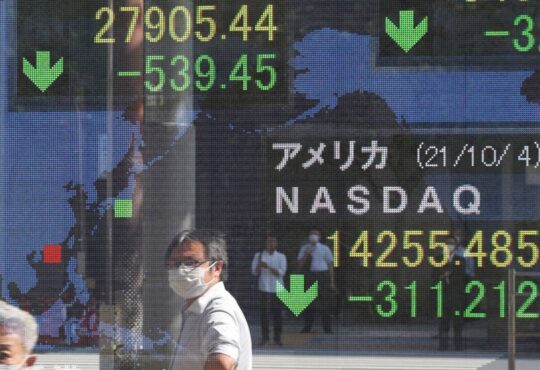

Image source: Getty Images
At the start of the year, I thought the Lloyds (LSE: LLOY) share price looked dirt cheap, trading at just over 47p. It looks even cheaper today (20 October), having falling more than 10% to 42.02p a share. And it could get cheaper still.
Lloyds shares are a bit of a mystery. The bank took the best part of a decade to sort itself out after the financial crisis, with its shares bumping up and down for years. I assumed that when it had cleaned up its act, returned to profitability and resumed dividends, the share price would fly again. Yet it hasn’t happened.
Lloyds make so much money these days that after every set of quarterly results, campaigners call for a windfall tax. In July, it reported a 23% rise in first-half profits to £3.8bn, yet its shares fell. Markets had expected £4bn.
What’s not to like?
Its shares currently yield 5.7%, covered three times by earnings. Next year, they’re forecast to yield 6.6%, with cover of 2.7. That’s a riveting rate of income and set to rise higher. Yet investors continue to turn their noses up at the stock.
Lloyds isn’t to blame for soaring interest rates or falling house prices. Yet as the UK’s biggest mortgage lender, it’s in the firing line anyway. It has set aside £662m for potentially bad loans, up 76% on last year. Naturally, investors didn’t like that.
Higher interest rates have boosted net margins, the difference between what Lloyds pays savers and charges borrowers. Yet now that tailwind is fading. Margins are forecast to fall from 3.22% in the first three months of 2023 to 3.1% by the year end.
The high street banks have come under fire for failing to pass on interest rate rises to savers, and this has hit deposits, which dropped £5.5bn in the first half. I’m not too worried. This is a fraction of the £469.8bn worth of deposits it still holds.
I can see why investors aren’t falling over themselves to buy Lloyds shares today, and the Israel-Hamas war has given investors another reason to hold off. I’ve noticed that when the FTSE 100 climbs, Lloyds shares climbs faster still. When the index falls, its shares falls faster too.
I’m ready to buy them
That tells me it is particularly vulnerable to investor sentiment. Which also tells me that if markets crash on Middle East fears, Lloyds will crash harder. It isn’t hard to imagine the share price falling below 40p in the next few days at which point I would find it impossible to resist. And here’s why.
At some point, interest rates will peak, investor sentiment will pick up, and markets will recover. When that happens, Lloyds could outpace the wider FTSE 100 recovery. Investors who buy when the misery index is high could reap the rewards.
The risk is that Lloyds could continue to disappoint. Its shares look dirt cheap, trading at 5.7 times earnings with a price-to-book ratio of 0.6. Yet I’ve been saying that for years and, in practice, it’s meant nothing.
That won’t stop me from topping up my existing stake if the Lloyds share price dips below 40p. At some point, the stock will recover. Until it does, I’ll have my dividends.





